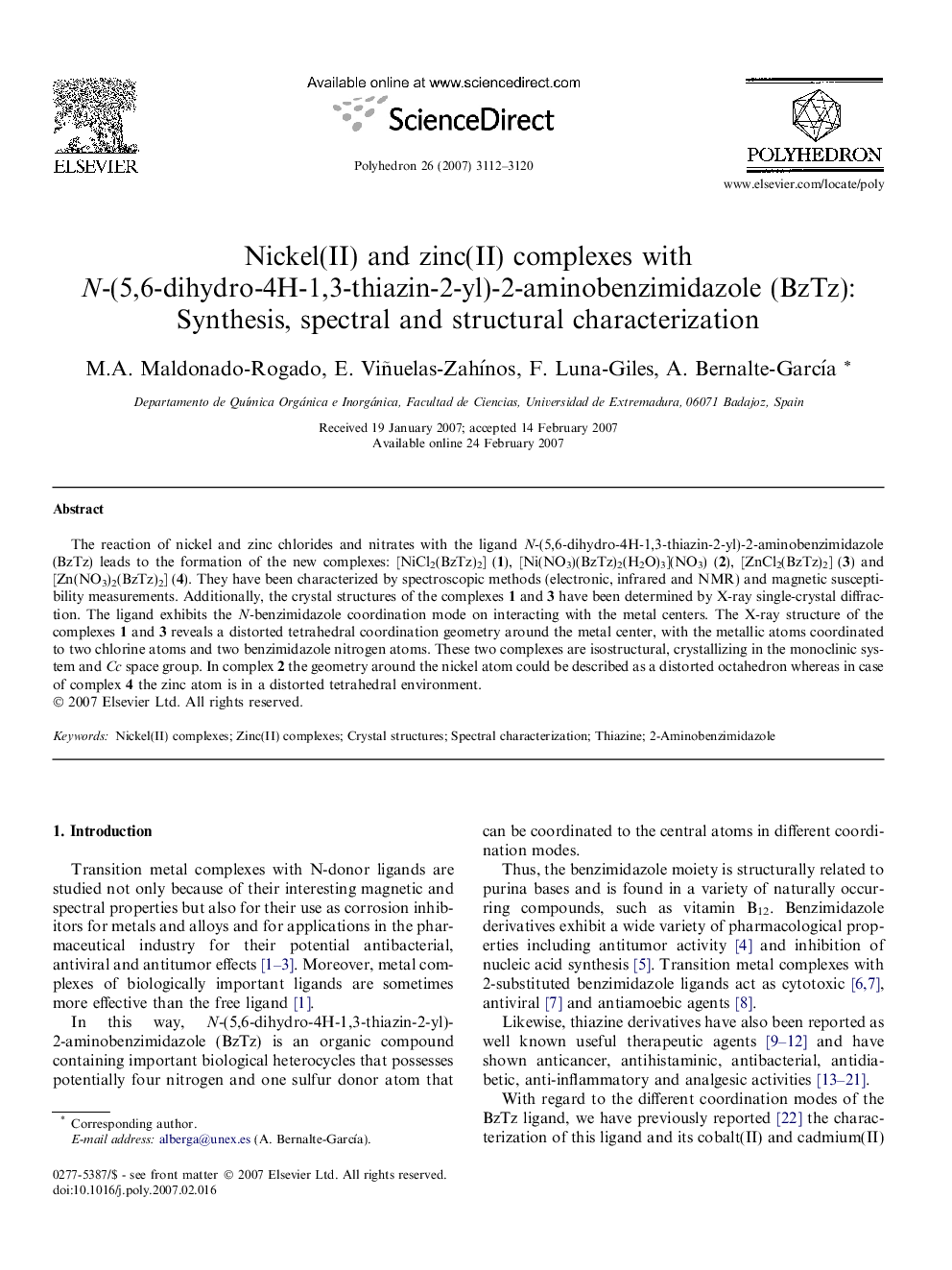| Article ID | Journal | Published Year | Pages | File Type |
|---|---|---|---|---|
| 1338478 | Polyhedron | 2007 | 9 Pages |
The reaction of nickel and zinc chlorides and nitrates with the ligand N-(5,6-dihydro-4H-1,3-thiazin-2-yl)-2-aminobenzimidazole (BzTz) leads to the formation of the new complexes: [NiCl2(BzTz)2] (1), [Ni(NO3)(BzTz)2(H2O)3](NO3) (2), [ZnCl2(BzTz)2] (3) and [Zn(NO3)2(BzTz)2] (4). They have been characterized by spectroscopic methods (electronic, infrared and NMR) and magnetic susceptibility measurements. Additionally, the crystal structures of the complexes 1 and 3 have been determined by X-ray single-crystal diffraction. The ligand exhibits the N-benzimidazole coordination mode on interacting with the metal centers. The X-ray structure of the complexes 1 and 3 reveals a distorted tetrahedral coordination geometry around the metal center, with the metallic atoms coordinated to two chlorine atoms and two benzimidazole nitrogen atoms. These two complexes are isostructural, crystallizing in the monoclinic system and Cc space group. In complex 2 the geometry around the nickel atom could be described as a distorted octahedron whereas in case of complex 4 the zinc atom is in a distorted tetrahedral environment.
Graphical abstractSome thiazine/2-aminobenzimidazole derivative nickel(II) and zinc(II) complexes were synthesized and characterized by physical measurements. The X-ray crystal structures of [NiCl2(BzTz)2] and [ZnCl2(BzTz)2] have also been determined. The geometry around the metallic atoms can be described as a distorted tetrahedron.Figure optionsDownload full-size imageDownload as PowerPoint slide
